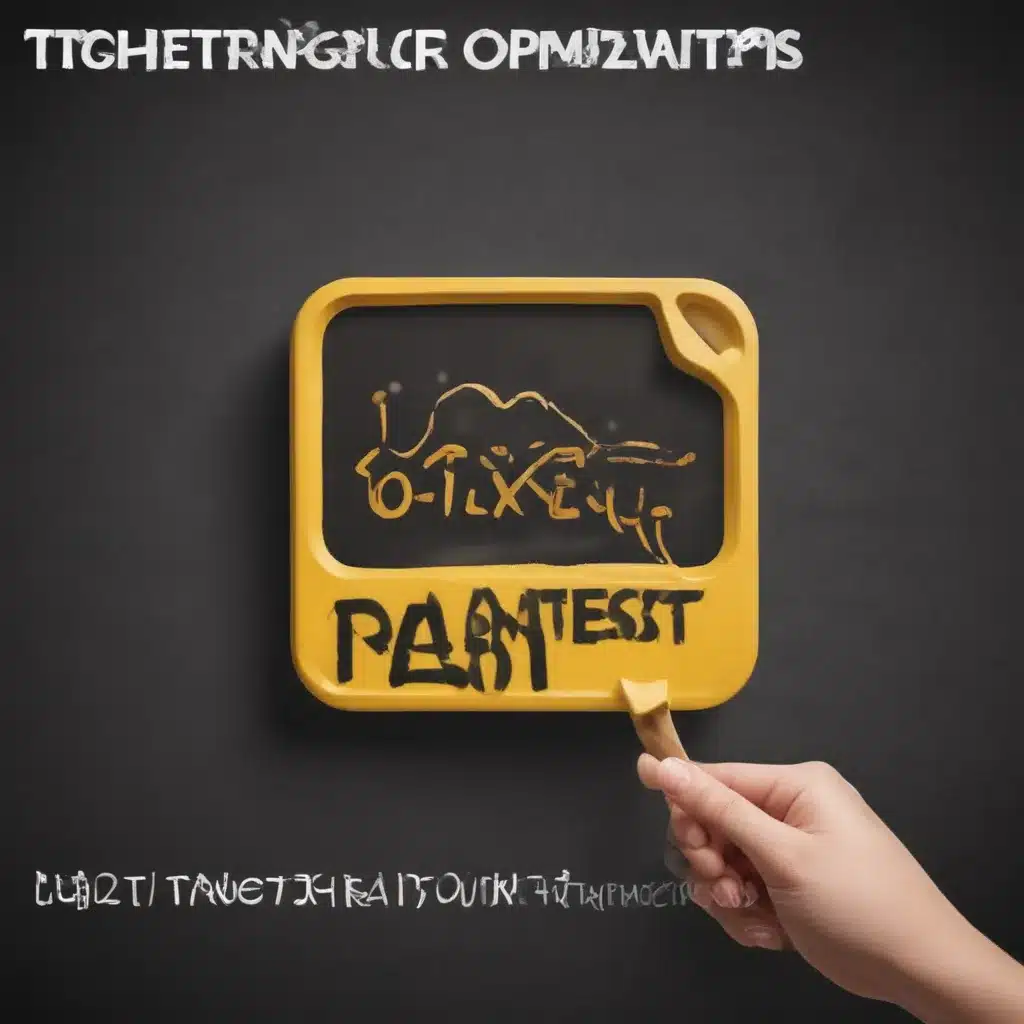
Alt-Text Optimization for Higher Rankings
Are you tired of pouring your heart and soul into crafting the perfect blog post or product page, only to watch it get lost in the digital abyss? Well, my friend, I’m here to let you in on a little secret that could be the game-changer you’ve been searching for: alt-text optimization.
Now, I know what you’re thinking – “Alt-text? Isn’t that just some geeky technical mumbo-jumbo that no one really cares about?” Well, let me tell you, my search engine-savvy friend, you couldn’t be more wrong. Alt-text is the unsung hero of the SEO world, and if you’re not leveraging it to its full potential, you’re seriously missing out.
Imagine this: you’ve created a stunning infographic that perfectly captures the essence of your latest blog post. It’s visually stunning, informative, and sure to captivate your audience. But what if I told you that without the right alt-text, your masterpiece might as well be invisible to the very search engines that could be sending droves of eager readers your way?
That’s right, folks – alt-text is the key to unlocking the true power of your images, and it’s time to start taking it seriously. So, buckle up, because we’re about to dive deep into the world of alt-text optimization and uncover the secrets to boosting your rankings and driving more traffic to your website.
The Importance of Alt-Text Optimization
Let’s start with the basics. Alt-text, also known as “alternative text” or “alt tags,” is the text that appears in place of an image when it can’t be displayed. This could be due to a slow internet connection, a vision impairment, or even just a glitch in the system.
But alt-text isn’t just about making your website accessible to those with visual impairments (though that’s a pretty darn important reason to use it). No, my friends, alt-text is a powerful SEO tool that can help search engines understand the content of your images and, more importantly, how they relate to the overall context of your page.
Think about it this way: when you search for something on Google, the search engine doesn’t just look at the text on the page – it also scans the images, and if those images have relevant alt-text, they’re more likely to surface in the search results. And you know what that means? More traffic, more engagement, and more potential customers for your business.
Crafting the Perfect Alt-Text
Okay, so we know why alt-text is important, but how do we actually do it right? Well, my fellow SEO enthusiasts, let me share a few tips that will have you optimizing your images like a pro in no time.
First and foremost, keep it concise and descriptive. Your alt-text should be a clear, accurate representation of what the image depicts, without getting too wordy or keyword-stuffed. Think of it as a mini-caption – you want to convey the essense of the image in a way that’s both informative and natural.
Yoast recommends aiming for about 10-20 words, and using your target keywords strategically to help search engines understand the relevance of your images.
But don’t just take my word for it – Google has some great advice on the matter too. They suggest focusing on “creating useful, information-rich content that uses keywords appropriately and is in context of the content of the page.” In other words, make it count, but don’t go overboard.
And speaking of keywords, be sure to avoid the dreaded “keyword stuffing” trap. Yes, you want to incorporate relevant keywords into your alt-text, but if you go overboard, you could end up doing more harm than good. Search engines are smart, and they’ll know if you’re trying to game the system.
Measuring the Impact of Alt-Text Optimization
Now, I know what you’re thinking: “This all sounds great, but how do I know if it’s actually working?” Well, my friend, fear not, for there are several ways to measure the impact of your alt-text optimization efforts.
LinkedIn suggests keeping a close eye on your organic traffic and impressions, as well as tracking any changes in your keyword rankings. If you see a boost in traffic or an improvement in your SERP positioning after optimizing your alt-text, you’ll know you’re on the right track.
Another metric to consider is the traffic coming from image searches. If your alt-text is doing its job, you may notice an uptick in visitors arriving via image-based queries. And don’t forget to keep an eye on user engagement metrics like click-through rate, bounce rate, and time on page – if your alt-text is enticing and accurate, you might just see those numbers start to improve.
And if you really want to get scientific about it, why not try a good old-fashioned A/B test? Create two versions of a page or product listing – one with optimized alt-text, and one without – and see which one performs better. It’s a surefire way to measure the impact of your efforts and fine-tune your approach.
Putting it All Together
So, there you have it, folks – the secret to unlocking the power of alt-text optimization and boosting your search engine rankings. It may seem like a small thing, but trust me, when it comes to SEO, every little bit counts.
Web Strategies sums it up perfectly: “Alt text provides additional context and information about an image on a website. It’s basically like adding an extra description layer that helps web crawlers understand what each image contains since they don’t recognize visuals like humans do!”
So, what are you waiting for? Go forth and conquer the world of alt-text optimization! Your search engine rankings (and your wallet) will thank you.



























